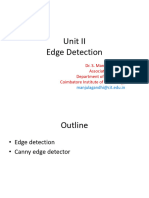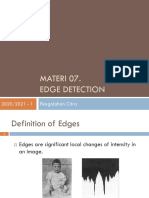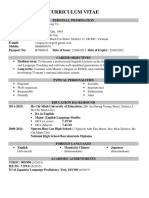0% found this document useful (0 votes)
26 views49 pagesLecture 10
The document covers Lecture 10 of EENG 860 on Digital Image Processing, focusing on image segmentation techniques such as point, line, and edge detection, as well as image thresholding. It discusses fundamental concepts, algorithms, and methods like the Canny edge detector and Otsu's method for optimal global thresholding. The lecture emphasizes the importance of image gradients and noise management in effective image segmentation.
Uploaded by
shravankumar46332Copyright
© © All Rights Reserved
We take content rights seriously. If you suspect this is your content, claim it here.
Available Formats
Download as PDF, TXT or read online on Scribd
0% found this document useful (0 votes)
26 views49 pagesLecture 10
The document covers Lecture 10 of EENG 860 on Digital Image Processing, focusing on image segmentation techniques such as point, line, and edge detection, as well as image thresholding. It discusses fundamental concepts, algorithms, and methods like the Canny edge detector and Otsu's method for optimal global thresholding. The lecture emphasizes the importance of image gradients and noise management in effective image segmentation.
Uploaded by
shravankumar46332Copyright
© © All Rights Reserved
We take content rights seriously. If you suspect this is your content, claim it here.
Available Formats
Download as PDF, TXT or read online on Scribd
/ 49
























































































